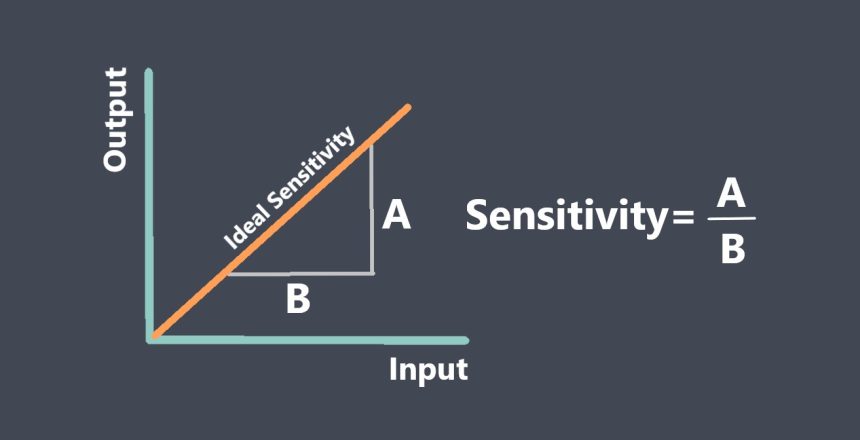
The sensitivity of a sensor refers to its ability to detect and respond to changes in the physical quantity that it is designed to measure. It is typically defined as the ratio of the change in output of the sensor to the change in input signal. This means that a highly sensitive sensor will produce a large change in its output for a small change in the input signal, while a less sensitive sensor will require a larger change in the input signal to produce the same magnitude of output change.
Sensor sensitivity refers to the ability of a sensor to detect changes in the quantity being measured. In other words, it is a measure of how responsive the sensor is to changes in the input signal.
For example, a temperature sensor with high sensitivity will detect even small changes in temperature, whereas a sensor with low sensitivity will only detect significant changes in temperature. Similarly, a light sensor with high sensitivity will be able to detect even small changes in light intensity, whereas a sensor with low sensitivity will only detect significant changes in light intensity.
The sensitivity of a sensor is typically expressed as a ratio of the change in output signal to the change in input signal.
Sensitivity = Y/X
where

Y= output change value
X= Input change value
Why is sensor sensitivity important?
Sensor sensitivity is an important characteristic because it determines the level of accuracy and precision that can be achieved when measuring physical quantities. A highly sensitive sensor will produce a large change in its output for a small change in the input signal, allowing for more precise measurements with smaller margins of error. On the other hand, a less sensitive sensor may require a larger change in the input signal to produce the same magnitude of output change, making it less accurate and less precise.
The importance of sensor sensitivity depends on the specific application and requirements of the measurement system. In some cases, high sensitivity is critical for achieving accurate and precise measurements, while in other cases lower sensitivity may be sufficient. The choice of sensor should take into account the required level of sensitivity, as well as other factors such as cost, durability, and compatibility with other components in the measurement system.
What parameters affect the sensitivity of the sensor?
There are several parameters that can affect the sensitivity of a sensor, including:
Material properties
The material properties of the sensing element (such as its elasticity, thermal expansion coefficient, and magnetic permeability) can affect its sensitivity.
Geometry
The geometry of the sensing element can also influence its sensitivity. For example, a thinner or longer sensing element may be more sensitive than a thicker or shorter one.
Signal processing
The way in which the output signal from the sensor is processed (for example, through amplification or filtering) can affect its sensitivity.
Environmental factors
Environmental factors such as temperature, humidity, and vibration can impact the sensitivity of a sensor, particularly if it is a mechanical or electronic device.
Electrical properties
The electrical properties of the sensor, including its resistance, capacitance, and inductance, can also influence its sensitivity.
It is important to note that these parameters are interdependent and can interact with each other in complex ways, making it challenging to optimize sensitivity in practice.
Measuring sensor sensitivity
The sensitivity of a sensor can be understood through its specifications, testing, and calibration.
Specifications
Sensor manufacturers typically provide specifications for their products, including the sensitivity of the sensor. The sensitivity may be given in terms of a unit change in output per unit change in input (e.g., volts per degree Celsius for a temperature sensor), or as a percentage change in output per unit change in input. By comparing the sensitivities of different sensors, you can get an idea of which one is more sensitive.
Testing
One way to understand the sensitivity of a sensor is to test it under controlled conditions using a known input signal. For example, a temperature sensor could be tested by exposing it to a series of known temperatures and measuring the resulting output signal. By analyzing the relationship between the input and output signals, you can determine the sensitivity of the sensor.
Calibration
Once you have determined the sensitivity of a sensor, you can calibrate it to improve its accuracy. This involves adjusting the sensor’s response curve so that it accurately reflects the input signal. Calibration can be performed using specialized equipment that generates known input signals, or by comparing the sensor’s output to a reference sensor with a known sensitivity.
It is important to note that sensitivity alone does not determine the overall performance of a sensor. Other factors such as resolution, linearity, and drift must also be taken into account when selecting and using sensors for specific applications.

